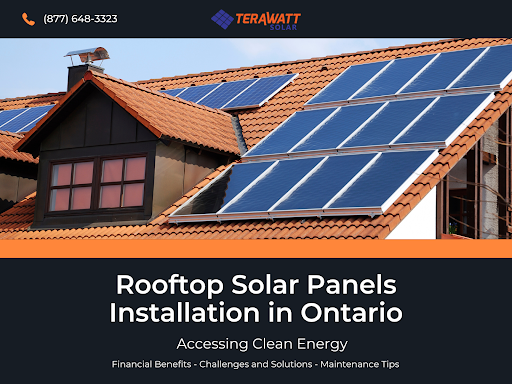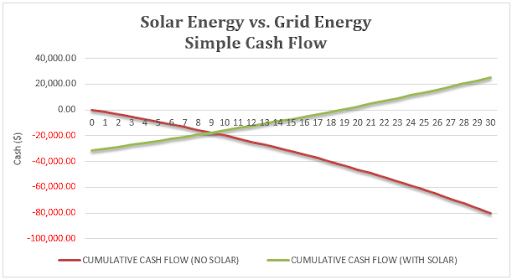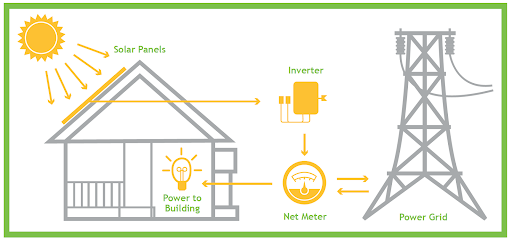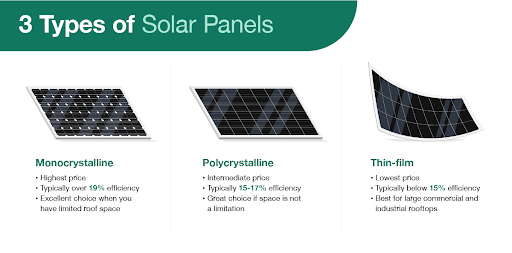Rooftop Solar Panels Installation in Ontario: Accessing Clean Energy

In recent years, the adoption of renewable energy sources has gained tremendous momentum across the globe. As the world grapples with the effects of climate change and the need to reduce greenhouse gas emissions, solar energy stands out as a promising solution. In Canada, and particularly in Ontario, rooftop solar panel installation has become increasingly popular as homeowners and businesses seek ways to reduce their carbon footprint while saving on energy costs.
This comprehensive guide will take you through the process of rooftop solar panel installation in Ontario, covering the key aspects, benefits, incentives, and important considerations.
Why Choose Rooftop Solar Panels in Ontario?
Environmental Impact
Ontario experiences a wide range of weather conditions throughout the year, making it an ideal location for harnessing solar energy. By installing rooftop solar panels, you can significantly reduce your carbon footprint. Solar panels generate electricity without emitting harmful greenhouse gasses, thus helping combat climate change. In fact, a typical residential solar panel system can offset several tons of carbon dioxide emissions over its lifetime.
Financial Benefits
Besides the positive environmental impact, rooftop solar panels offer substantial financial advantages in Ontario:
Reduced Energy Bills
Solar panels generate electricity from the sun’s energy, which means you’ll draw less power from the grid. This can lead to significant savings on your electricity bills.
Return on Investment (ROI)
While there’s an initial investment in purchasing and installing solar panels, the long-term ROI is substantial. Most systems pay for themselves within 5-10 years, depending on various factors.

The Rooftop Solar Panel Installation Process
Site Assessment
Before installing solar panels, it’s crucial to assess your site’s suitability for solar energy. Factors such as roof orientation, shading, and structural integrity must be evaluated. South-facing roofs with minimal shading are ideal for maximizing solar energy production.
Design and Permitting
Once your site is deemed suitable, a customized solar panel system design is created. This includes determining the optimal number of panels, their placement, and the type of inverters to use. After finalizing the design, you’ll need to obtain the necessary permits and approvals from local authorities.
Installation
The installation phase involves mounting the solar panels securely on your roof, connecting them to the inverters, and setting up the electrical components. This step requires skilled professionals who are well-versed in safety protocols and the intricacies of solar panel installation.
Connection to the Grid
After installation, your system must be connected to the electrical grid. This typically involves coordination with your utility company to ensure seamless integration. Once connected, you can start generating clean energy and benefit from net metering.

Financial Incentives and Rebates
Ontario’s Net Metering Program
Under Ontario’s Net Metering Program, excess electricity generated by your solar panels is fed back into the grid, and you receive credits on your utility bill. This allows you to offset the cost of electricity you draw from the grid when your solar panels aren’t generating enough power, such as at night.
Federal Solar Tax Credits
The federal government offers tax credits for residential and commercial solar installations. The Investment Tax Credit (ITC) allows you to deduct a percentage of your solar panel installation costs from your federal taxes. This can result in significant savings and a faster ROI.
Feed-in Tariff Programs
Ontario has various feed-in tariff programs that offer incentives for renewable energy production. These programs provide fixed payments for the electricity generated by your solar panels over a specified period, making solar panel installation even more financially attractive.
Choosing the Right Solar Panels and Equipment
Solar Panel Types
There are several types of solar panels available, including monocrystalline, polycrystalline, and thin-film panels. Each has its own advantages and price points. Monocrystalline panels are known for their efficiency and durability, while thin-film panels are less efficient but more flexible in terms of installation options.

Inverters
Inverters convert the direct current (DC) electricity generated by solar panels into alternating current (AC) electricity used in homes and businesses. The choice of inverter depends on your system’s design and needs. Common types include string inverters, microinverters, and power optimizers.
Monitoring Systems
To ensure your solar panel system is performing optimally, consider investing in a monitoring system. These systems provide real-time data on energy production, allowing you to track your system’s performance and detect any issues promptly.
Maintenance and Long-Term Benefits
Maintenance Tips
Solar panels require minimal maintenance, but regular inspections are essential. Keep the panels clean, check for debris or shading, and ensure all connections are secure. It’s advisable to have a professional perform an annual maintenance check.
Lifespan and Warranty
Solar panels typically have a lifespan of 25 to 30 years or more. Most manufacturers offer warranties ranging from 10 to 25 years, guaranteeing the panels’ performance. This long lifespan ensures a reliable source of clean energy for decades and the cost of such solar panels is higher on average.
Increased Property Value
Installing solar panels can increase the value of your property. Homebuyers are increasingly looking for energy-efficient homes with lower operating costs, making solar-equipped properties more attractive in the real estate market.
Common Challenges and Solutions
Shading Issues
Shading from trees, nearby buildings, or other obstructions can reduce solar panel efficiency. To mitigate this, consider tree trimming or removing obstructions, or opt for microinverters or power optimizers that can minimize the impact of shading. But first, you should get a thorough shading analysis from a customer-centric solar installer.
Winter Maintenance
In snowy climates like Ontario, it’s essential to address snow accumulation on solar panels. Snow can temporarily reduce energy production. You can remove snow manually with a roof rake or invest in systems that automatically clear snow.
Snow Removal
Be cautious when removing snow from solar panels to avoid damage. Use soft brushes or specialized snow removal tools designed for solar panels to prevent scratching the surface.

Navigating Solar Panel Regulations
While the benefits of rooftop solar panel installation in Ontario are numerous, navigating the regulatory landscape can sometimes be a challenge. Understanding and complying with relevant regulations is crucial to a successful installation. Here’s a closer look at some common regulations and how to navigate them:
Ontario Building Code (OBC)
The OBC and Solar Installations
The Ontario Building Code (OBC) governs the construction and renovation of buildings within the province. When it comes to solar installations, there are specific requirements outlined in the code that must be followed. These include provisions for structural integrity, fire safety, and electrical safety.
Compliance and Permits
To ensure compliance with the OBC, it’s essential to work with a qualified solar installer who is familiar with the code’s requirements. Obtaining the necessary permits and approvals from your local municipality is also a crucial step in the process. Your installer should be well-versed in the permitting process and can assist you in securing the required documentation.
Electrical Safety Authority (ESA)
ESA Approval
The Electrical Safety Authority (ESA) exists to oversee electrical safety in Ontario. Solar installations are considered electrical work and, therefore, fall under the ESA’s jurisdiction. It’s imperative that your solar installation complies with the Electrical Safety Code and is performed by a licensed electrical contractor. The ESA may inspect your system to ensure it meets safety standards.

Grid Connection
Connecting to the Grid
Connecting your solar panel system to the electrical grid is a critical step in the installation process. Your utility company will require you to follow specific procedures and meet safety standards for grid connection. Your solar installer will coordinate with the utility company to ensure a seamless connection.
Expert Guidance Is Key
Navigating the regulatory landscape of rooftop solar panel installation in Ontario may seem daunting, but with expert guidance, it becomes a manageable process. Partnering with an experienced solar installer like Terawatt Solar who understands the regulations and can handle the necessary permits and approvals is essential. By ensuring compliance with all relevant regulations, you can enjoy a hassle-free and successful solar panel installation in Ontario while reaping the environmental and financial benefits of clean energy.
A Bright Future with Rooftop Solar Panels
Rooftop solar panel installation in Ontario presents a compelling opportunity to embrace clean energy, reduce energy costs, and contribute to a sustainable future. With the right planning, equipment, and professional installation, you can harness the power of the sun and enjoy the numerous benefits that come with it. Take the first step towards a brighter, greener tomorrow by exploring rooftop solar panel installation options in Ontario today. Your investment in solar energy not only benefits you but also the environment and future generations.
If you’re ready to embark on your solar journey or have any questions about rooftop solar panel installation in Ontario, Terawatt Solar is here to assist you. Contact us for a consultation and start your path towards a cleaner, more sustainable future.